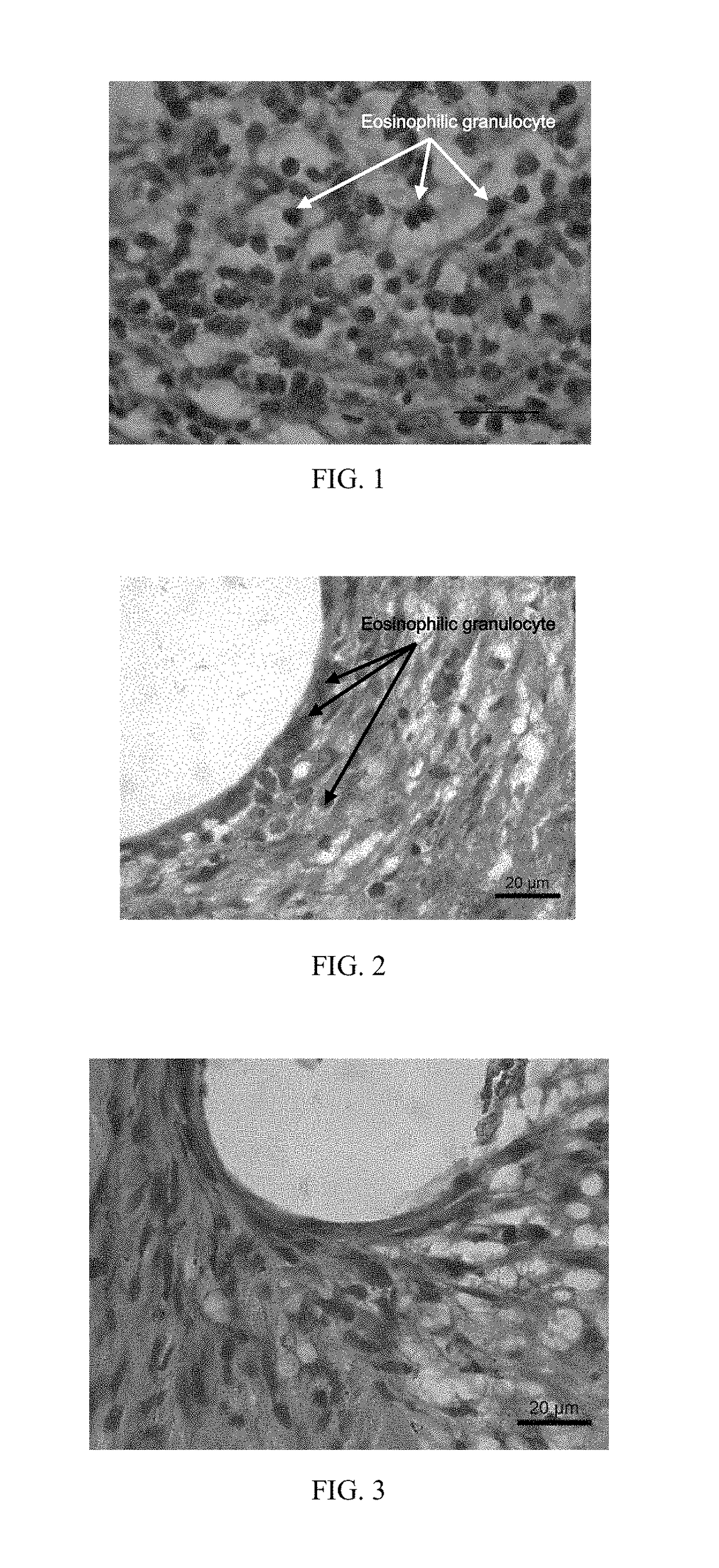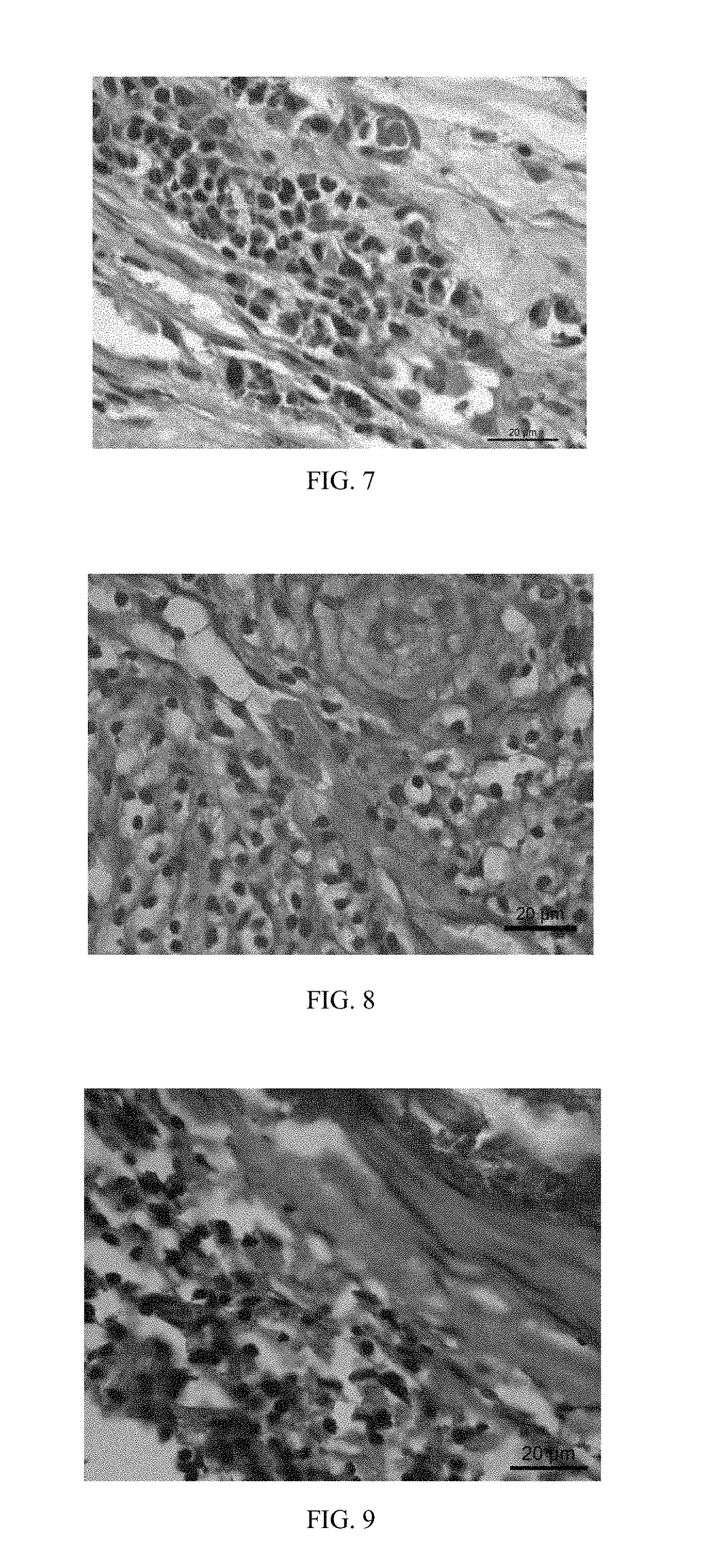Implanted Device
a technology of implants and proximal tubes, applied in the field of implants, can solve the problems of stent blockage, serious potential safety hazards, and more serious mortality risks, and achieve the effect of reducing the potential safety hazards of implants
- Summary
- Abstract
- Description
- Claims
- Application Information
AI Technical Summary
Benefits of technology
Problems solved by technology
Method used
Image
Examples
embodiment 1
[0043]A vascular stent has an iron-zinc alloy as a substrate, and the device substrate of the vascular stent contains 95 percent of zinc, 4.5 percent of iron and total 0.5 percent of inclusion elements except for the zinc and the iron. The surface of the stent is coated with a mixture of polylactic acid. dexamethasone and gluconic acid by dripping; after the surface is dried, the vascular stent of Embodiment 1 is obtained; a coating on the surface of the stent is 2 μm in thickness, and the mass ratio of the polylactic acid to the dexamethasone in the coating is 2:1; and the content of the dexamethasone drug on the surface of the device substrate is 100 ug / cm2. The vascular stent of this embodiment is implanted into a porcine coronary blood vessel. After 6 months, the stent and vascular tissue where the stent is implanted are taken out, and the vascular tissue is subjected to pathology observation.
[0044]With reference to FIG. 3, a pathological section shows that the vascular tissue a...
embodiment 2
[0046]A stent has pure zinc as a substrate, and the device substrate of the stent contains 99.95 percent of zinc and the balance of inclusion elements. The surface is subjected to dip-coating in a mixture of polyglycolic acid, methylprednisolone, ethylene diamine tetraacetic acid tetrasodium and sirolimus; the mass ratio of three components in the mixture is 50:1:1 and a coating with the thickness of 25 μm is obtained; after the coating is dried, the vascular stent of Embodiment 2 is obtained; and the content of the methylprednisolone drug on the surface of the device substrate is 200 ug / cm2. The vascular stent of this embodiment is implanted into a porcine coronary blood vessel. After 6 months, the stent and vascular tissue where the stent is implanted are taken out, and the vascular tissue is subjected to pathology observation.
[0047]With reference to FIG. 4, a pathological section shows that the vascular tissue around the vascular stent of this embodiment does not generate eosinop...
embodiment 3
[0049]A galvanized iron-based stent is provided and the device substrate of the stent contains 1 percent of zinc, 98 percent of iron and the balance of inclusion elements. The surface of the device substrate is first coated with a solution containing polylactic acid-glycollic acid, hydrocortisone and acetylsalicylic acid via spraying, thus obtaining a coating with the thickness of 50 μm: the mass ratio of the polylactic acid-glycollic acid to the hydrocortisone in the coating is 1:5; then the surface of the drug coating is coated with a polylactic acid coating layer with a thickness of 5 μm, thus obtaining a vascular stent of Embodiment 3; and the content of the hydrocortisone drug on the surface of the device substrate is 300 ug / cm2. The vascular stent of this embodiment is implanted into a porcine coronary blood vessel. After 1 month, the stent and vascular tissue where the stent is implanted are taken out, and the vascular tissue is subjected to pathology observation.
[0050]With r...
PUM
| Property | Measurement | Unit |
|---|---|---|
| Fraction | aaaaa | aaaaa |
| Thickness | aaaaa | aaaaa |
| Thickness | aaaaa | aaaaa |
Abstract
Description
Claims
Application Information
 Login to View More
Login to View More - R&D
- Intellectual Property
- Life Sciences
- Materials
- Tech Scout
- Unparalleled Data Quality
- Higher Quality Content
- 60% Fewer Hallucinations
Browse by: Latest US Patents, China's latest patents, Technical Efficacy Thesaurus, Application Domain, Technology Topic, Popular Technical Reports.
© 2025 PatSnap. All rights reserved.Legal|Privacy policy|Modern Slavery Act Transparency Statement|Sitemap|About US| Contact US: help@patsnap.com



